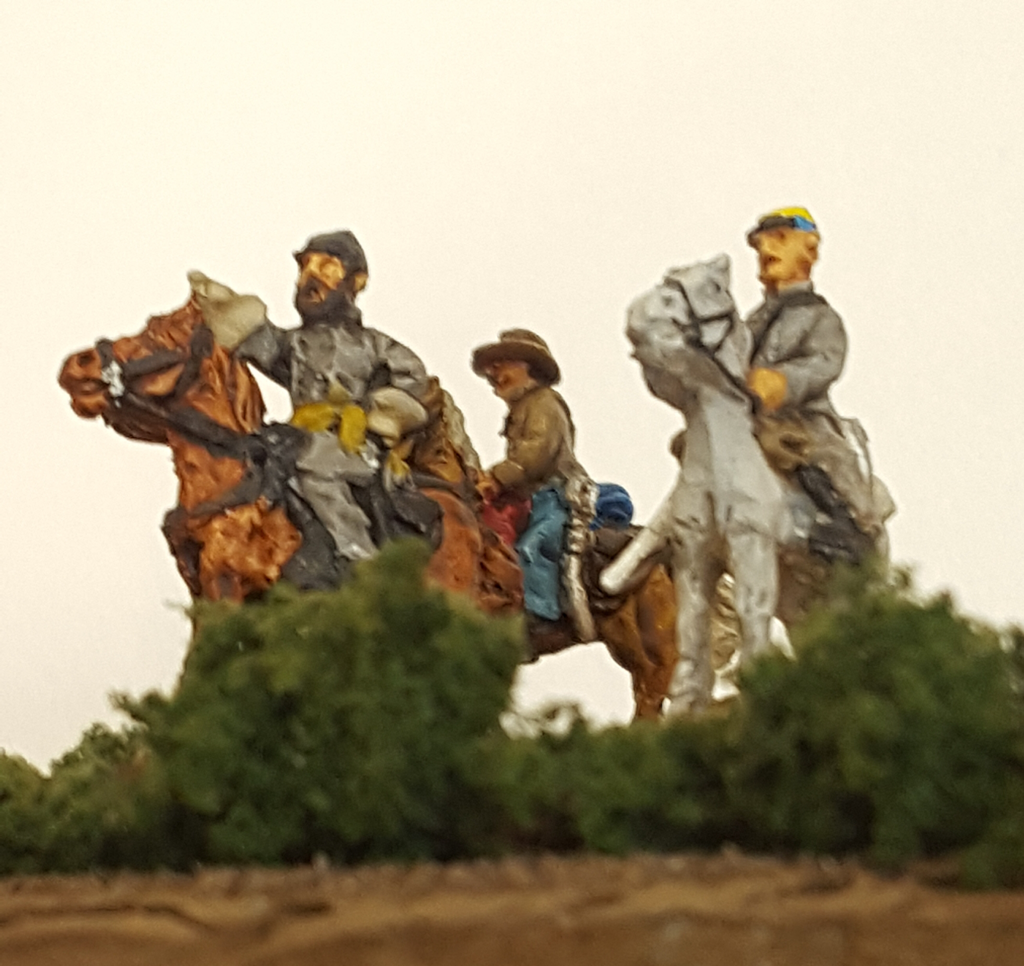|
Every so often, we return to gaming the Napoleonic period. Recently, I was reading Digby Smith’s history of Leipzig and got taken right back to an obsession that had lasted for most of the 1990s. Back then our rules of choice were Napoleon’s Battles, then published by Avalon Hill. One of the supplements for these rules included several scenarios for refighting Leipzig. My friend Keith and I agreed to collect the whole Leipzig Orbat in 15mm between us. We managed to paint all the units present on 16 October 1813 (admittedly at a scale of 1 figure to 120 men), but we didn’t get around to the Army of the North or other latecomers, so alas, no Swedes. Over five years or so we played several good games based on the events of the first day of the battle.
After rereading Digby Smith, I felt the urge to give Leipzig another go. I decided to start with the attack on Markkleeberg, which was made by a Russo-Prussian column under Kleist, mostly against Poniatowki’s VIII Corps, supported by Semelé’s division of Augereau’s Corps. I pulled together the other sources in my bookcase, which included Scott Bowden’s Grande Armee of 1813, the Osprey Campaign Book of Leipzig by Peter Hofschroer, Lorraine Petrie’s 1813 and two Polish language histories, one of the battle and the other about Poniatowski’s Poles throughout 1813. I had three options for the rules: Napoleon’s Battles of course; Honour Games’ Blucher; or their older, tactical set, Lasalle. Plan A was to adapt the Napoleon’s Battles Orbat for Blucher and I do hope to do this at some stage. But having read about the exciting exploits of individual battalions and cavalry regiments around Markkleeberg, I decided to start with Lasalle, using my small collection of 6mm figures. It proved tricky to work out the detailed order of battle and decide on deployments and reinforcement schedules. The accounts differ widely about exactly who was where and what happened on the day. No two books agreed on the troops involved. On the Allied side, some books just list the formal order of battle, which places Kleist at the head of the whole 2nd Prussian Corps, whereas Smith and Lorraine Petrie explain that at Leipzig, Kleist’s Brigades were shared out among the four Allied attack columns, to bolster their numerically depleted Russian allies. According to these sources, all Kleist had with him was the 12th Brigade, alongside Helfreich’s tiny Russian division. I decided to go with this version as it makes sense of the accounts in all of the books about how the engagement fought out. Had Kleist been in control of his full Prussian Corps, I suspect he would have overrun Poniatowski in no time at all. On the Polish side, again, every book has a different Orbat. Bowden, whose research into French returns is exhaustive, touches only lightly on the Poles and his returns for them don’t match with any other source I could find. I think the trouble here is that several theoretical orders of battle that were decreed for VIII Corps were never implemented because events moved too fast. Mariusz Łukasiewicz, in his book “Armia Księcia Józefa 1813”, carefully examines the true shape of VIII Corps throughout that year. I therefore decided to go with his list. As for the sequence of events, all sources agree that Kleist initially succeeded in taking Markkleeberg, was counterattacked in the course of the day and that by nightfall, he had been pushed back to his start line except he still had a toehold in the village. The resulting scenario is here. We have played it twice and a report and some photos are in my next post.
0 Comments
Leave a Reply. |
Archives
November 2023
Categories
All
|

 RSS Feed
RSS Feed